
Introduction
In today’s hyper-connected world, platforms like Twitter act as real-time indicators of public sentiment. With millions of conversations unfolding by the minute, the challenge lies in capturing meaningful insights from this data stream. That’s where the Twitter Sentiment Analysis Dataset proves invaluable—a structured dataset enriched with emotional and contextual tags, enabling a deeper understanding of user perspectives.
This resource empowers brands, researchers, and institutions to identify emerging Social Media Sentiment Trends with clarity and precision. By decoding these patterns, businesses and AI systems alike can make more informed, responsive decisions that reflect the voice of the public.
A Closer Look at the Twitter Sentiment Analysis
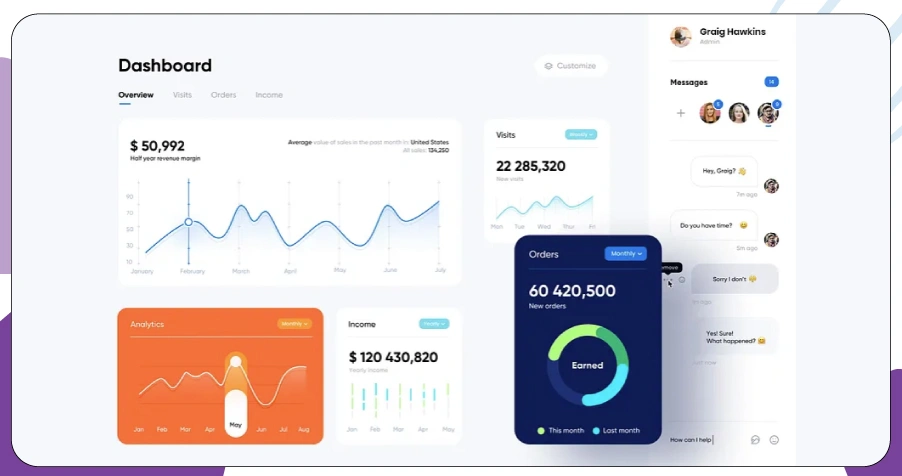
A Twitter Sentiment Analysis Dataset is a well-organized collection of tweets, annotated with sentiment labels like positive, negative, or neutral. Alongside the sentiment tags, these datasets typically contain valuable metadata such as the tweet content, hashtags, user details, time of posting, and language, offering deeper context for analysis.
Such datasets are instrumental in training machine learning models to recognize emotional tone in social media posts. By analyzing patterns in language, these models can determine if users are sharing appreciation, dissatisfaction, or neutral commentary about a specific brand, event, or trending issue.
The value of such datasets extends to multiple use cases, including:
- Tracking public sentiment during breaking news events
- Analyzing consumer feedback on marketing initiatives
- Interpreting public opinion around social or political movements
- Developing and fine-tuning AI models for sentiment-driven applications in NLP
The Strategic Value of Tracking Public Opinion Through Social Media Sentiment
Understanding Social Media Sentiment Trends goes far beyond counting likes or retweets. These trends provide dynamic insights into public perception, offering valuable clues about how audiences react in real time. Whether it's a brand update, a political stance, or a product release, the emotional tone captured through sentiment analysis can shape decisions across industries.
A surge in negative tweets following a feature update could signal potential backlash, while a spike in positive mentions during a campaign may affirm strategic alignment.
Monitoring these highlighted sentiment patterns empowers businesses and institutions to:
- Address public relations issues before they escalate
- Decode audience sentiment with greater clarity
- Tailor products and services based on user feedback
- Evaluate and refine communication efforts effectively
In today’s digital age, staying informed about emotional shifts across platforms is no longer optional—it’s critical for success.
How Twitter Sentiment Analysis Shapes Real-Time Public Insights?
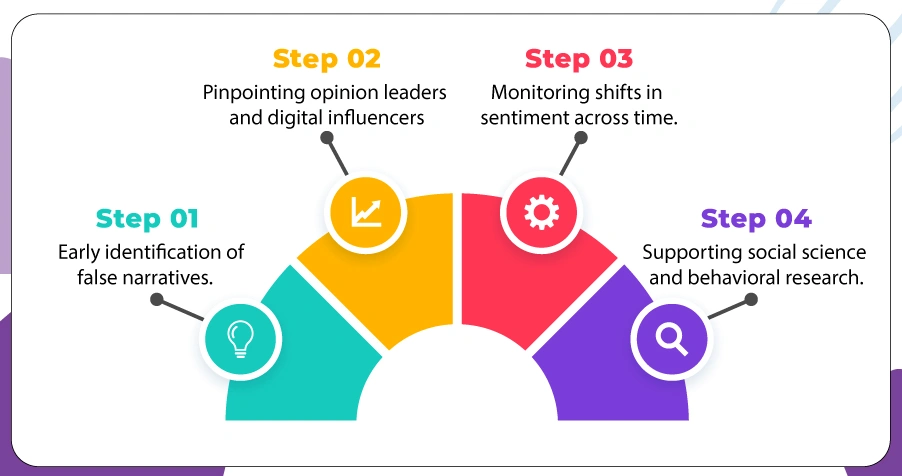
Understanding the role of Public Opinion Mining On Twitter has become a critical part of digital strategy for businesses, researchers, and governments alike. Instead of focusing solely on surface-level metrics like likes or retweets, this method analyzes the underlying sentiment, emotional tone, and polarity of tweet content, revealing more nuanced insights into user expression and engagement.
From political debates and social causes to global incidents, Twitter captures public emotion in real time. By analyzing these conversations, organizations can stay aligned with community sentiment, detect early signs of misinformation, and identify influential voices that shape public discourse.
Benefits of opinion mining include:
- Early identification of false narratives.
- Pinpointing opinion leaders and digital influencers.
- Monitoring shifts in sentiment across time.
- Supporting social science and behavioral research.
Building a Tweet Dataset for AI-Powered Sentiment Detection

Developing a robust Tweet Dataset For AI Models is essential for training applications to recognize emotional tone and context. These datasets help AI understand how users express anger, irony, or satisfaction within the short, dynamic structure of tweets.
Steps to curate high-quality tweet datasets:
- Collect tweets ethically using APIs or compliant scraping tools
- Filter data by topic, language, and relevance
- Annotate for sentiment manually or through model-assisted tagging
- Validate datasets through quality checks and model testing
Once compiled, these datasets power:
- Emotionally aware chatbots
- Live sentiment dashboards
- AI-driven customer service agents
- Real-time crisis detection platforms
Extracting Tweets by Keyword for Focused Insights
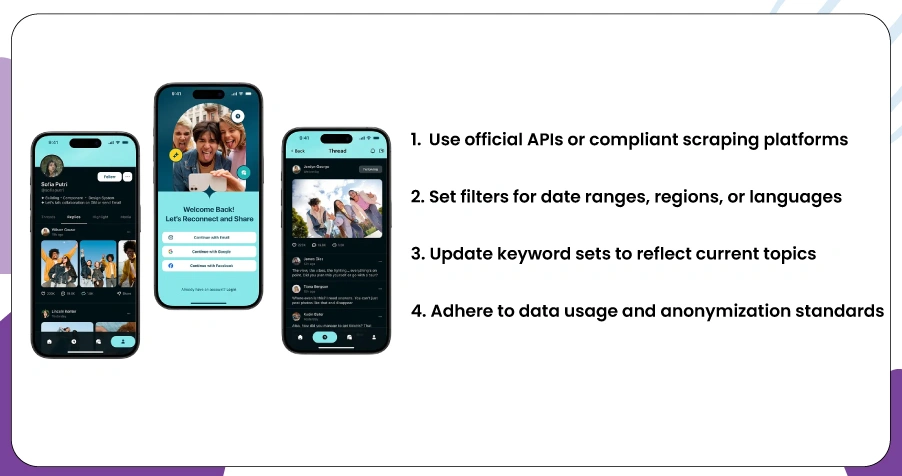
To focus on public conversations tied to particular themes, analysts often rely on keyword-based tweet filtering. This method enables the identification of tweets related to a specific product, campaign, or trend, offering targeted insights essential for accurate sentiment analysis.
For instance, an EV brand could track keywords like “charging speed” or “range anxiety” to analyze user sentiment around performance. Best Practices to Extract Tweets By Keyword:
- Use official APIs or compliant scraping platforms
- Set filters for date ranges, regions, or languages
- Update keyword sets to reflect current topics
- Adhere to data usage and anonymization standards
This strategy helps analysts detect emerging trends and understand nuanced public perspectives as they unfold.
Analyze Twitter Comments for Unfiltered Public Sentiment Insights

To truly understand the unfiltered voice of the public, analysts examine Twitter replies found under specific posts, hashtags, or brand-related tweets. These responses often uncover candid user sentiment that conventional surveys tend to overlook.
To Scrape Twitter Comments Effectively:
- Respect ethical guidelines and use only public, non-sensitive data
- Implement rate limits to avoid detection or platform blocks
- Use tools with built-in classifiers to tag sentiment in real time
This approach uncovers immediate audience reactions—whether it’s praise, concern, or viral enthusiasm—providing brands with actionable insights from the front lines of engagement.
Track Twitter Sentiment in Real Time for Agile Decisions
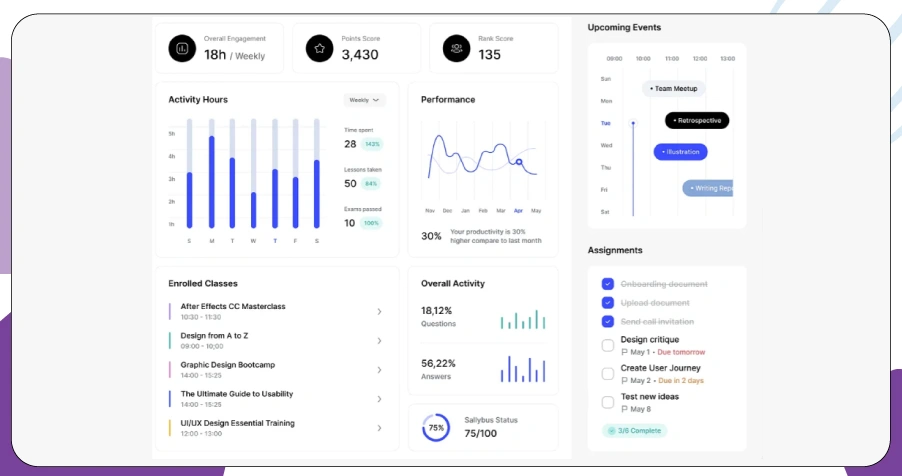
With the help of modern analytics tools, businesses now use Real-Time Twitter Sentiment Tracking to adapt to changing perceptions instantly. By processing live tweet streams, these systems allow marketing and communication teams to adjust strategies on the fly.
Practical applications of sentiment analysis on Twitter include:
- Political teams are monitoring regional voter mood
- Studios assessing film reactions post-release
- Airlines identifying passenger pain points mid-flight
This real-time capability is crucial for brands needing to respond to sentiment shifts without waiting for post-campaign reports or surveys.
Business Value of Social Sentiment Insights from Twitter Data
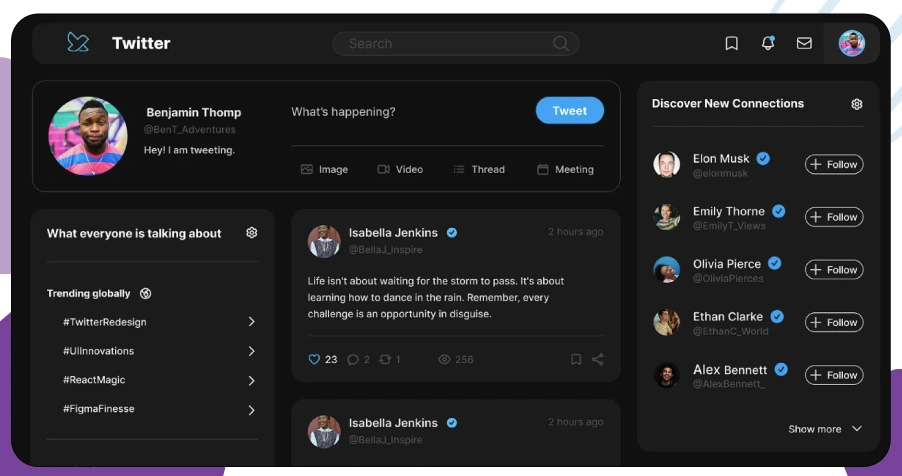
Collecting Twitter Data For Sentiment Analysis delivers valuable insights that extend across industries—from customer service and product feedback to crisis management and fraud detection.
Practical Scenarios Where It Adds Real Value:
- Retail brands are monitoring campaign impact and customer concerns.
- Financial institutions are identifying abnormal sentiment around service disruptions.
- Healthcare agencies evaluate public reaction to advisories or health policies.
This data helps teams anticipate issues, optimize messaging, and shape strategy with confidence.
Why Analyzing Twitter Data Matters for Modern Insights?
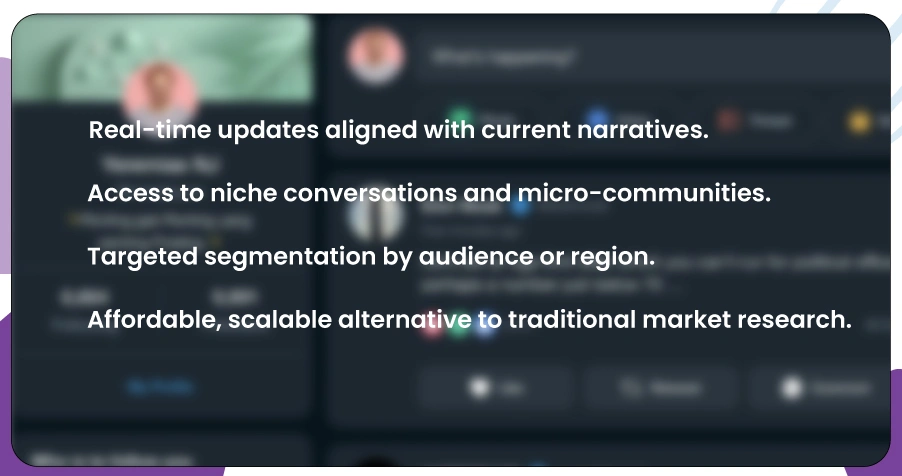
Using Twitter Scraping For Analytics allows organizations to move beyond historical data and engage with real-time insights. By continuously collecting tweets, engagement stats, and user behavior data, teams can monitor campaigns, measure sentiment, and identify new opportunities.
Key benefits of using Twitter data scraping for insights:
- Real-time updates aligned with current narratives.
- Access to niche conversations and micro-communities.
- Targeted segmentation by audience or region.
- Affordable, scalable alternative to traditional market research.
Whether you're tracking brand perception or public response to global events, Twitter scraping offers a dynamic lens into the digital pulse of society.
How ArcTechnolabs Can Help You?
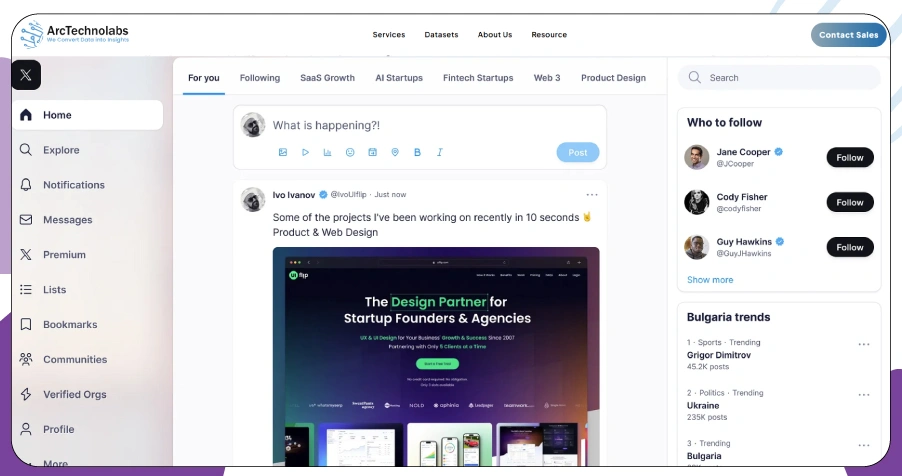
We specialize in building tailored solutions that unlock the power of the Twitter Sentiment Analysis Dataset to drive smarter decisions. Our expertise lies in transforming raw Twitter data into clear, real-time sentiment insights that align with your industry needs.
Here’s how we support your sentiment intelligence goals:
- Provide clean, ready-to-use datasets tailored to your project scope.
- Set up automated workflows for real-time tweet extraction and analysis.
- Develop advanced sentiment scoring models with topic-wise breakdowns.
- Enable seamless API integrations with your existing tools.
- Create custom visualization dashboards for deeper engagement insights.
- Support AI model training with domain-specific Twitter data.
From collection to interpretation, our tools ensure you stay in tune with how your audience thinks and feels. By enabling actionable Public Reaction Analysis, we help you move faster and make decisions with greater confidence.
Conclusion
In today’s fast-moving digital space, the Twitter Sentiment Analysis Dataset provides actionable insights into shifting user emotions and conversations. Whether you're aiming to understand customer reactions, evaluate campaign impact, or train more innovative AI models, this dataset acts as a crucial resource for making informed decisions.
By incorporating focused Public Reaction Analysis into your strategy, your team can identify emotional shifts early and respond with precision. Contact ArcTechnolabs to start building your sentiment intelligence pipeline and take the guesswork out of public engagement.









